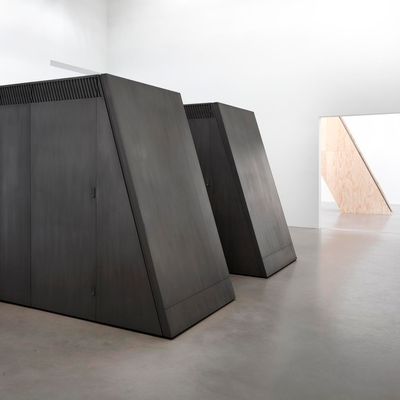
Whether, with the dramatic change in our politics, a paradigm shift is in the offing or the opposite is happening (and things are just becoming more of what they already are), we need to ask where this leaves the art world? Not artists. I trust theyÔÇÖll do whatever they have to do to adapt. And thrive. And make us see things we didnÔÇÖt know we needed to see until we see them. Instead, I address the playing field where we encounter art and artists; close to home in time and space: the galleries and museums.
A change in curatorial tactics is in order; one that might fit the present better than the one thatÔÇÖs been in effect for a while. For the last decade or so weÔÇÖve been engaged in an intensive art-history rebalancing act. The post-crash years have been a period of a great looking-backwards to what was missed, passed over, undervalued, geographically shunted aside, or shunned altogether in generations before. Everyone was sifting through histories; rediscovery was the new discovery; course correction was the new staying the course.
This shouldnÔÇÖt stop entirely. But by now this practice has tilted toward habit and obsession. (IÔÇÖve dished my share of it; harping on self-taught outsiders, calling for their integration into permanent collections.) Regardless, weÔÇÖre now treated to endless numbers of articles in art magazines on the art and artists of the 1960s and 1970s (often written by the same authors who wrote them the first time around). Whole seminars, lectures, exhibitions, and sections of biennials are devoted to it. Museum shows abound. Ever crenulated iterations of the 1960s are explored; the tiniest axiomatic structures of the 1970s; every hypersecretion of performance is examined, documented, restaged. The 1980s are now getting similar treatment. ItÔÇÖs wonderful living in a privileged culture with the luxury of exhibiting what was missed or rejected the first time around; this Borgesian dream of making it all right some day. Yet, recent seizures in events suggest the atlas of the present is changing; chemical signals are different: chains of cognition altered. We no longer have the same surfeit of time for historicizing right now. Certainly not around the same period of the past.
I walk blocks of bigger New York galleries ÔÇö smaller ones too ÔÇö sometimes rarely seeing shows of the art of the now. People seem to feel safer thinking in the past tense. That is not what we need. As a critic, I need to make a commitment to the art of this moment; now. I want the art world as a whole to do the same. It is the only way to discern what so-called Art in this Age of Trump is. Part of the reason the 1960s, 1970s, and later the 1990s were such outstanding creative periods was that artists and galleries placed a premium on identifying ideas and art of the present. Identifying oneÔÇÖs own time so one could help change it was paramount. Of course there are downsides to leaving behind the archival, revival, and revisionist work, so much of which has been devoted to correcting the prejudices and oversights of the past. But we need to see whatÔÇÖs possible in the present from the present ÔÇö not just the past. Supporting the present is a form of supporting one another, a way of paying respect to each other and our time. Thermal winds are shifting; convection currents are in motion. Any evasion of these movements in this actual moment strikes me as indulgent, self-abdicating, unwilling to engage ambiguity, uncertainty, or relinquish a sense of intellectual control.
Space is so limited in New York; every square foot, every month counts. And if small and medium-size galleries take regular chances on lower-priced, lesser-known artists, these spaces are placed in extreme economic peril, especially when things that donÔÇÖt look like other things come with more risk than ever. If a gallery goes even three or four months with light sales or less-expensive art the gallery could go belly up quickly. If this happens en masse it will be a catastrophic loss of infrastructure having far-reaching repercussions, even placing all but the very top and bottom of the market in jeopardy. But lately IÔÇÖve wondered about a simple Darwinian value of just surviving. Just staying open or keeping-going doesnÔÇÖt feel like much of a goal at all anymore.

